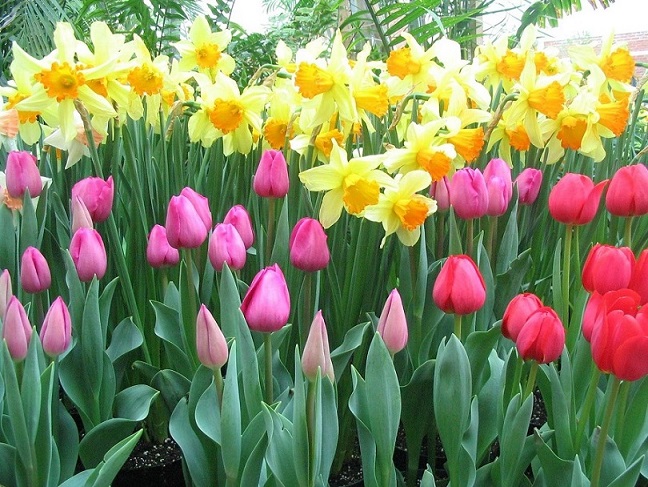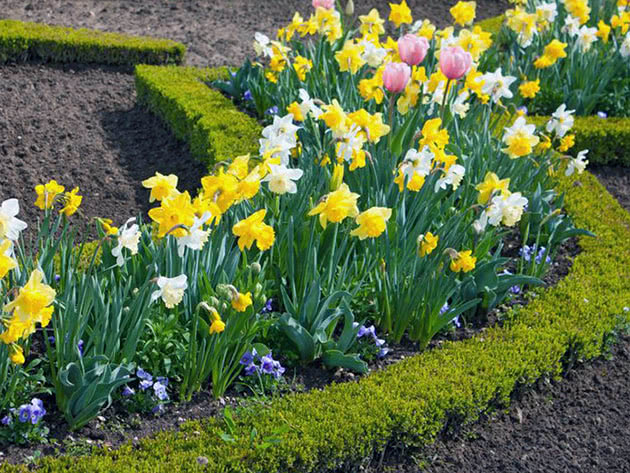
Any spring garden is associated with peonies, lilies of the valley and daffodils. The last flowers look aesthetically beautiful and have a pleasant, sophisticated aroma. These bulbous plants love warmth, sunshine, and moderate watering. They come in many varieties, but the most popular are white petals with a yellow center. Some people are interested in how to grow daffodils separately from other plants, but you can also mix them with other flowers.

Mix these flowers with tulips for a stunning spring carpet.
Planting of Daffodils
Choose healthy bulbs for planting in the soil. It is important to place them at the correct depth otherwise they may grow but not bloom. Best of all it is 5-7 cm deep.

The distance between the shoots should be about 20-30 cm. Daffodils love moisture, water them regularly and loosen the soil (to reduce evaporation). The planting time of the bulbs depends on the timely seasonal flowering. This can be done in early September or at the end of August.

The growing place should be sunny or partial shade. Do not plant daffodils in drafts and some hybrid types only like partial shade. You can create flower arrangements or mix the types of daffodils; a bright and fragrant flower field awaits you in spring. Most types of daffodils are approximately the same height; hybrids may be slightly higher or lower than the normal species.
Easy Ways to Grow Daffodils
Daffodils are particularly hardy and can grow in almost any temperate region. They do not like sultry heat and severe frosts. Many gardeners grow daffodils in their homes because they love the beauty and pleasant aroma of these flowers. It is better to take small flower pots and choose more sustainable materials.

But gardening is more popular if you can.

Planting is best in autumn because flowering can begin in early spring or late winter. There are also other helpful tips to keep your flowers stunning and healthy:
- Explore the varieties of daffodils to find the right varieties for your climate;
- If you choose a sunny planting site, provide the soil with good drainage;
- Prepare the soil by first adding the mixture (garden flower mix);
- You need to plant the bulbs by lifting the pointed part up.
How to Care for Daffodils
If your choose to grow daffodils, so betterto learn their features. First, choose the right type based on the shape of the bulbs: oval, ovoid, round or pointed. It is best to plant them immediately after digging up, because dried out bulbs will give a weak root system and a defective plant.

You need to dig up the bulbs after the leaves of the plant turn yellow and completely lay down. These flowers love nutritious soil that allows air to pass through perfectly. Protect your them from pests that love the sweet scent of these plants (mites, daffodil flies, slugs, and others).
The Best Companion Plants for Daffodils
Low-growing types of daffodils can be planted on alpine slides, independent or shared flower beds, along garden paths, and so on. You can grow daffodils alone or as part of an overall composition. These bulbous plants can grow comfortably near tulips, peonies and other spring flowers.

Tulips are especially good for growing with daffodils: they have approximately the same height, sunlight and watering preferences.

Some gardeners advise you to plant them near coniferous bushes (when they fall, they will cover and protect the soil of the daffodils from drying out). Phlox, muscari, hyacinths, and lilies can also be excellent companions.
